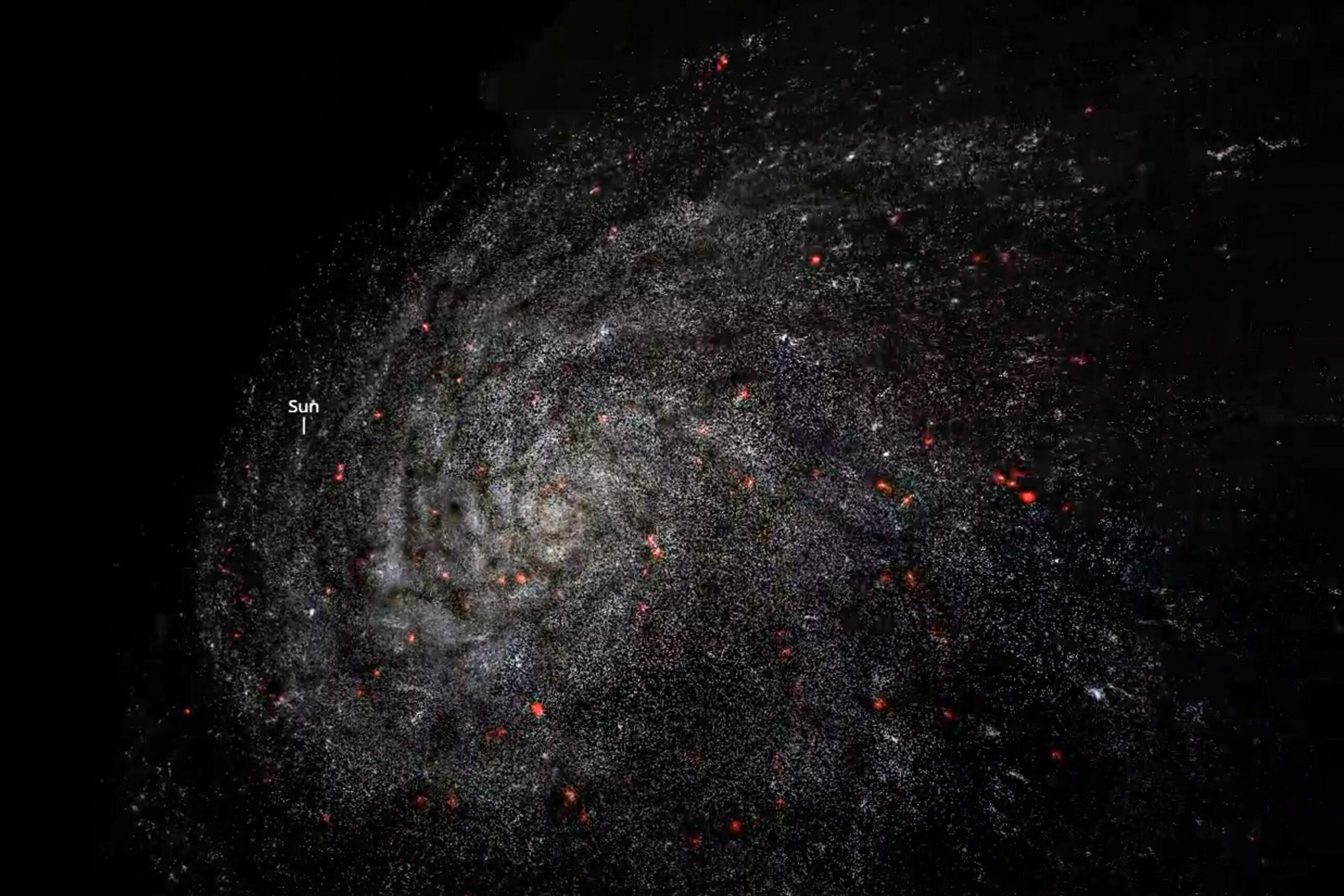A team of researchers has released the most extensive map of the universe to date, cataloging nearly eight hundred thousand galaxies and reaching back thirteen and a half billion years into cosmic history. The effort, known as the COSMOS‑Web project, is led by scientists at the University of California Santa Barbara and the Rochester Institute of Technology. They published the full dataset on June 5 after more than two hundred and fifty hours of observations with the James Webb Space Telescope.
The map covers just over half a square degree of sky, which is roughly three times the area of a full moon. It shows about ninety eight percent of the universe’s entire timeline, from today back to when the cosmos was only three hundred million years old. The raw data add up to one and a half terabytes. That volume of information dwarfs all earlier deep field surveys and contains about two hundred times more galaxies than the famous Hubble Ultra Deep Field.
Early analysis has already raised questions about our understanding of how the first stars and galaxies formed. UC Santa Barbara physicist Caitlin Casey, who co‑leads the project, said the number of galaxies at extreme distances surprised the team. She explained that astronomers had expected only a few objects within the first five hundred million years after the Big Bang, but the James Webb telescope revealed roughly ten times more than predicted. In addition, the new observations uncovered supermassive black holes that Hubble could not detect in the young universe.
The abundance of early galaxies suggests that light and structures emerged more quickly than existing models allow. Casey pointed out that the finding will force theorists to revise their estimates of how fast gas collapsed under gravity and how soon stars switched on. She said that the breakdown in current theories will lead to a fresh look at the physics of the early universe.
The scientific team made user access to data a top priority. They released both the raw telescope images and processed catalogs so that amateur astronomers, students, and researchers worldwide can work with the same information. An interactive online map lets anyone click on individual galaxies, inspect their brightness, and study their shapes without specialized software or training. This open approach aims to invite new ideas and discoveries from a broad audience.
Rochester Institute of Technology astronomer Jeyhan Kartaltepe, the other project co‑leader, highlighted how this open data model can accelerate progress. He said that when many people examine the same dataset, they will find features that a few eyes might miss. In his view, the project reflects a growing movement toward sharing resources and tools so science can advance faster and more fairly.
The COSMOS‑Web survey forms part of a larger push for transparency in astronomy. Funding agencies and research groups now insist on rapid data releases to foster collaboration. The James Webb Space Telescope, which launched in December 2021, has already changed our view of the cosmos with its infrared instruments. It can spot faint light from the earliest galaxies and peer through dust that hides star‑forming regions in nearby galaxies.
In this latest effort, the team focused on infrared filters that capture light from the first generations of stars. They combined nearly a week of exposure time in each filter to reach the faintest objects. The scientists then processed the images with advanced software that removes noise and corrects for instrumental effects. Finally, they ran automated routines to detect and classify every source in the field.
The result is a catalog that lists positions, redshifts, and brightness for each of the nearly eight hundred thousand galaxies. Researchers will use this catalog to study how galaxies grow, how black holes evolve, and how large‑scale structures like voids and filaments take shape. The data will also support future observations with telescopes on the ground and in space.
As the community begins to mine this vast dataset, astronomers expect new insights into the first era of galaxy formation. The full data release invites anyone with internet access to join the search for answers about where we come from and how the universe took shape. In the months ahead, follow‑up studies should uncover more surprises hidden in the oldest light that humanity can observe.

